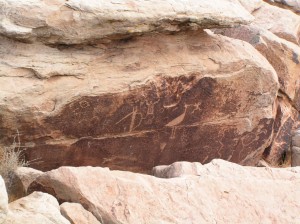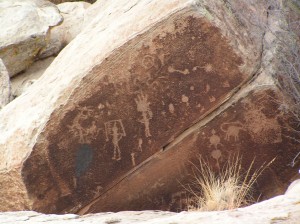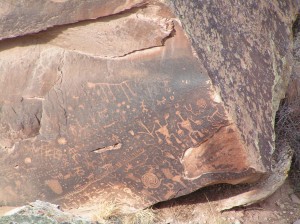That’s the theory advanced by physicist named Paul A. LaViolette. I was quite intrigued when I first saw the news story about LaViolette’s proposal. Happily, the story included a download link to a preprint of the paper (which was published in Radiocarbon). My evaluation, therefore, can be based on the paper itself and not just the summation given in the story.
I’ll admit I had some reservations right from the beginning, when I saw mention in the story that LaViolette had written a book in 1997 arguing that certain themes found in mythologies worldwide are references to intense solar activity at the end of the Pleistocene. I’m not an expert in solar physics, but I do know something about oral traditions. If the book is what the story claims, then LaViolette makes the same mistake that Von Daniken and Velikovsky made: treating myth as a distortion of history, which it is not. Mythology is not bad history, or mistaken history, because it’s not history at all, but something very different. This is a peripheral issue, however, as there is no mention of any oral traditions in this particular paper.
Although, as I said, I am not an expert in solar physics, I do have enough of a physics and chemistry background to follow LaViolette’s argument. Basically, he uses evidence from isotope analysis of seafloor layers called varves from the Cariaco Basin (off the coast of Venezuela) to argue for a massive solar flare between 12,957 and 12,760 years ago. This would be near the beginning of a period of rapid global cooling called the Younger Dryas. In addition to the Cariaco varves, LaViolette also uses data from Greenland ice cores to bolster his argument.
LaViolette goes on to argue that the magnitude of this flare – he estimates it as about 125 times more powerful than a similar type of flare observed in 1956 – would have overpowered the Earth’s magnetic field and allowed animals at ground level to receive at least 3 sieverts of radiation, in the form of high energy protons, which would be close to a lethal dose. He bases this on the presumption that the flare would have lasted about 50 hours, similar in length to the 1859 Carrington Event, and he takes into account the shielding effect of the atmosphere. He also suggests that the partial collapse of the magnetic field due to the flare would have allowed some of the interplanetary dust that surrounds the planet to fall to earth, and argues that this explains the extraterrestrial dust markers that have been found in some sediment cores.
I’m not qualified to evaluate whether or not a solar flare is the best explanation for LaViolette’s isotope data; he may very well be right about that. I was surprised to notice, however, that his estimate of the radiation dosage assumes that the animals on the ground were exposed for the entire 50 hours, even though the sun would have been on the opposite side of the planet for roughly half of this period. Also, the amount of atmosphere through which the protons would have to pass would logically depend upon the angle of the sun in the sky, which obviously varies throughout the day.
A second problem is that LaViolette nowhere addresses the geographically uneven nature of the terminal Pleistocene extinctions. While a large majority of North American species larger than 100 kg went extinct, very few African or South Asian species did. Extinction rates on the other continents lie between those two extremes. It is certainly conceivable that some mechanism might exist that could cause a solar flare to produce this effect. However it is not immediately obvious what that mechanism might be. Some discussion of this problem, I believe, ought to have been included.
Of course, the question of whether the Pleistocene extinctions occurred very rapidly or over a period of several thousand years is far from settled. However, this is not necessarily a problem for LaViolette’s hypothesis. It is easily conceivable that a short burst of intense radiation could eliminate or severely reduce the populations of a few keystone species and thereby have a long term destabilizing effect on an entire ecosystem. If this were the case, identifying those keystone species and showing that they were, in fact, the first to become extinct, would be a primary step in building a chain of supporting evidence.
Although, as I said at the beginning, this is an intriguing idea, as presented it has some significant problems. Until those are addressed, I believe a skeptical approach to LaViolette’s model is warranted.








